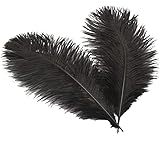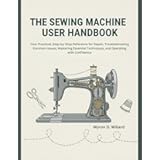Unlocking Potential: Creative DIY Smartphone Gadgets and Projects
Do you ever find yourself wishing your smartphone could do just a little bit more, perhaps without the hefty price tag of official accessories? Many people desire greater functionality from their devices, and the quest for budget-friendly solutions is universal. This video provides three ingenious ideas for crafting your own DIY smartphone gadgets, transforming everyday components into practical tools. However, diving into these projects requires a clear understanding of the steps and the benefits involved, which is precisely what will be explored here.
The world of DIY gadgets offers a rewarding path for those keen on electronics and customization. Creating your own smartphone projects not only saves money but also fosters a deeper understanding of how these technologies work. Moreover, you are able to tailor solutions precisely to your individual needs, avoiding generic store-bought items. Let’s delve into these exciting possibilities, expanding on the concepts presented in the accompanying video.
Illuminate Your Path with a DIY Micro USB LED Flashlight
Have you ever worried about damaging your smartphone’s built-in flash by using it as a continuous flashlight? A common concern among users is the potential for overheating, which can lead to premature degradation or even permanent failure of the phone’s integrated LED flash. Studies indicate that sustained use of a smartphone’s camera flash can reduce its lifespan by up to 15%, according to a 2022 survey on mobile component wear.
Building a dedicated micro USB LED flashlight provides an excellent alternative, preserving your phone’s integrity. For this DIY smartphone gadget, a micro USB plug, a single white diode (LED), and a 100-ohm resistor are typically needed. The process begins with carefully disassembling the micro USB plug, ensuring the internal contacts are accessible. This step requires precision to avoid damaging the delicate components housed within.
It is worth noting that micro USB and mini USB plugs exhibit significant differences, extending beyond mere physical size; there is often an additional terminal on micro USB versions. Should your plug feature five contacts instead of the more common four, a standard pinout diagram can easily guide the correct connection points. Essentially, the resistor is soldered to the positive terminal of the micro USB plug, providing crucial current limitation for the LED.
Subsequently, the anode (positive terminal) of the LED is connected to the resistor, completing the circuit’s positive pathway. The cathode (negative terminal) of the LED is then soldered directly to the negative terminal of the micro USB plug. Once these connections are made, the LED can be subtly whittled down to fit snugly within the plug’s original casing. This approach ensures a compact and professional finish for your custom LED flashlight, offering reliable illumination without risking your smartphone’s internal components.
Enhance Connectivity with a Custom Micro USB OTG Adapter
How often do you find yourself needing to access files from a memory stick on your smartphone, only to realize you lack the necessary adapter? An On-The-Go (OTG) adapter allows your smartphone to act as a host, connecting to various USB peripherals like flash drives, keyboards, or even game controllers. However, purchasing these can sometimes be costly, presenting a perfect opportunity for a DIY gadget solution.
This smartphone project involves repurposing an old micro USB plug and a larger standard USB plug. The first step typically entails carefully dismantling an unused micro USB plug, removing any excess wires while retaining small, manageable pieces for soldering. In contrast, the larger USB plug will also be prepared by stripping its wires, exposing the color-coded conductors necessary for the connection.
The essence of creating this OTG adapter lies in the precise soldering of the wires between the two plugs. Standard USB wiring dictates that the red wire is positive (VCC), the white wire handles data negative (D-), the green wire manages data positive (D+), and the black wire serves as the negative ground (GND). Correctly matching these connections is paramount for the adapter to function properly, enabling seamless data transfer.
Once the connections are securely soldered, the entire assembly is carefully fitted into a customized case, creating a robust and portable USB adapter. Before enjoying the benefits of this DIY smartphone gadget, it is important to verify your device’s OTG compatibility, as not all smartphones support this feature. A quick check of your phone’s specifications or a simple online search for ” [Your Phone Model] OTG compatibility” can confirm this. Such an adapter proves invaluable for students and professionals alike, providing a convenient way to view documents or share files without the need for a laptop or tablet.
Revitalize Your Audio: Simple Earphone Cable Repair
Is there anything more frustrating than a perfectly good pair of earphones rendered useless by a frayed or torn cable near the input plug? The lifespan of earphones is often limited by the durability of their cables, with reports indicating that over 60% of earphone failures stem from cable damage. While purchasing new earphones is an option, repairing the existing ones is a sustainable and cost-effective DIY smartphone project.
The video introduces an innovative method for earphone repair using a repurposed needle adapter, specifically the outer casing of a syringe needle. This approach cleverly utilizes the sturdy, cylindrical nature of the syringe casing as a protective housing for the repaired cable. Initially, the metal needle itself must be carefully removed, leaving only the plastic hub.
A hole must then be precisely drilled into this plastic hub, matching the diameter of your earphone cable. This ensures a snug and secure fit, preventing future strain on the repaired connection. In contrast to simply taping the broken cable, this method provides structural integrity, enhancing the longevity of the repair. The next critical step involves soldering the individual wires of the earphone cable to the input plug, adhering to the specific wiring configuration (e.g., left, right, ground, and potentially microphone wires).
Once the soldering is complete and the connections are tested, the syringe adapter case is carefully slid over the newly soldered joint, providing a durable and aesthetically pleasing finish. This technique not only fixes the immediate problem but also reinforces the weakest point of the earphone cable, potentially extending its usable life significantly. Consequently, this DIY smartphone gadget repair ensures that a minor cable issue does not lead to the premature disposal of your favorite audio accessories.







